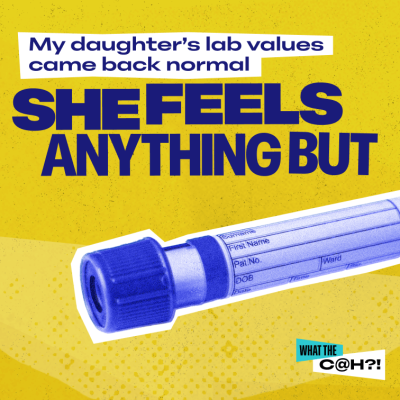Neurocrine Biosciences’ newest educational campaign wants frustrated congenital adrenal hyperplasia patients to ask, “What the C@H?!”
Neurocrine unveiled the campaign this week, not long after reporting positive results for a pair of phase 3 studies of its drug crinecerfont for CAH. The “What the C@H?!” website offers both educational resources and a place for CAH patients to vent about their difficult experiences with the condition—and commiserate about those shared experiences.
According to Neurocrine, the site is aimed at teenagers and adults with CAH, as well as their caregivers, the parents of children with the disease and doctors who treat it. The company said it built out the campaign based on conversations with 63 patients and more than 120 healthcare providers, as well as “extensive market research.”

One tab on the site leads visitors to information about “CAH essentials,” including descriptions of the cause, types and symptoms of the rare genetic disease, and how it’s typically diagnosed. Elsewhere, patients and their caregivers can explore “What the C@H?!” moments, vote on those they relate to—for the chance to see those earn a “special feature” on the site—and submit their own. Moments already listed include “I feel like I have a degree in endocrinology just managing this condition” and “Back to school means back to explaining CAH.”
Interested visitors to the site can also opt to provide their email addresses in return for “videos and info” about CAH and its management.
"We are proud to introduce this effort to recognize the significant physical and emotional burden individuals and their families experience living with CAH,” Eiry Roberts, M.D., Neurocrine’s chief medical officer, said in a statement. “We hope this educational initiative, which was informed by insights from the community, is helpful to those navigating and managing this difficult condition.”
Though the patient-facing “What the C@H?!” website doesn’t include any information specifically about the treatments that Neurocrine is currently developing for CAH, it does devote one section to describing the difficulties of treating the condition. According to the “Treatment Challenges” tab, glucocorticoids have remained the “only treatment for both low cortisol and excess androgens” for 70 years, despite the fact that the high doses of GCs needed to effectively treat CAH have been linked to serious short- and long-term effects.
The section includes a two-minute video that walks through several symptoms of CAH and side effects of high-dose GC treatment, which may be difficult for some patients and caregivers to differentiate. It also recommends that patients talk to their doctors first if they’re interested in lowering their GC dosage.
U.S. healthcare providers, meanwhile, can access a separate version of the “What the C@H?!” site that not only offers additional information about the disease and treatment methods, and the pitfalls of high-dose GC treatment but also goes into more detail about the ongoing research into new ways to treat CAH—specifically, “the untapped potential of the [corticotropin-releasing factor] pathway in CAH management.”
Crinecerfont, Neurocrine’s drug under development for CAH treatment, is a CRF1 receptor antagonist, designed to reduce adrenal androgen overproduction. It’s currently in two separate phase 3 studies: one for children and adolescents, and the other for adults. Results of the former study released last fall showed that after 28 weeks, crinecerfont hit its primary endpoint of producing a statistically significant reduction in daily glucocorticoid dose compared to placebo, while also maintaining androgen control; those findings echoed similar results from the adult-focused trial that were unveiled a month earlier.